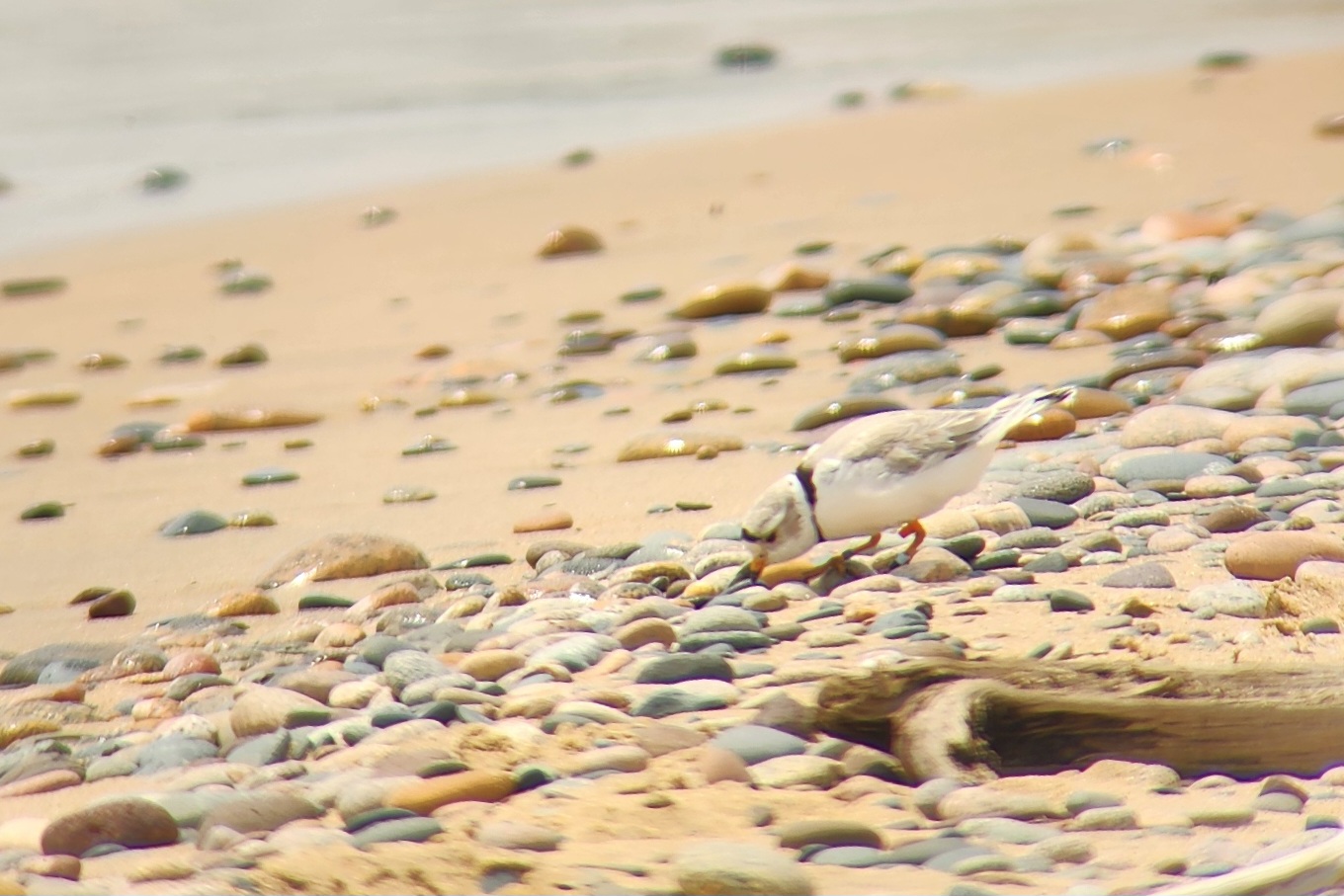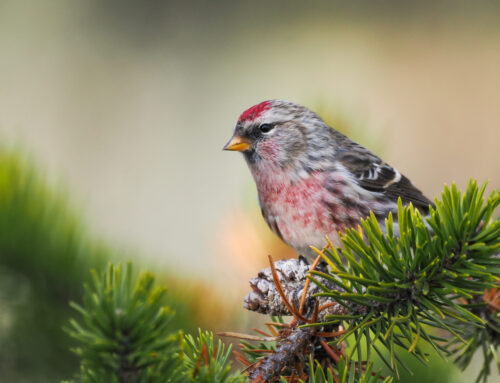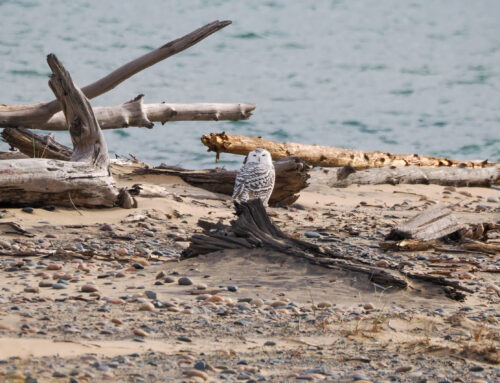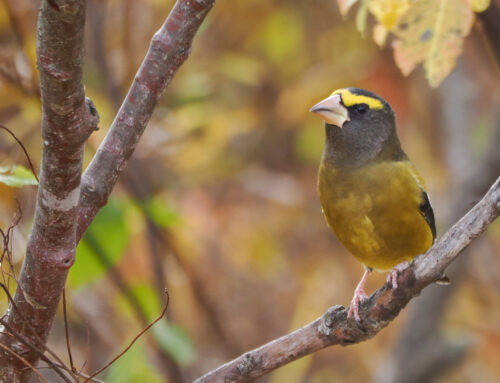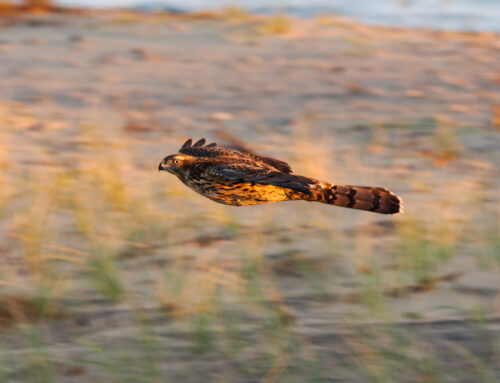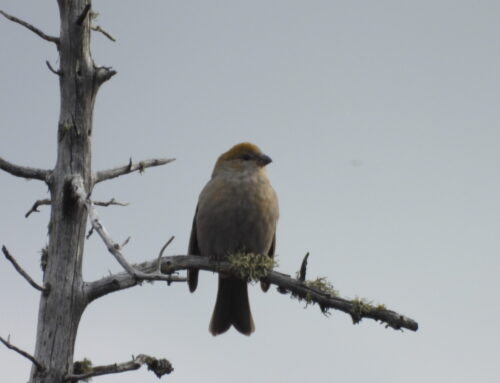Whitefish Point
I hope you weren’t waiting with bated breath, because the only news I have to report is that everything is normal at Whitefish Point. But normal is great, it’s what we hope for. Little Bill Bob and Vie have been faithfully incubating their clutch of four each day, ensuring that their young grow strong and healthy before they brave the obstacles of the beach. Sometimes their incubation switches are quite comical. Vie will appear on the ledge of the beach after her turn foraging, and Bob will hop off the nest approaching her. He then puffs up his chest and peeps with purpose at Vie, seeming to direct her to her duty.
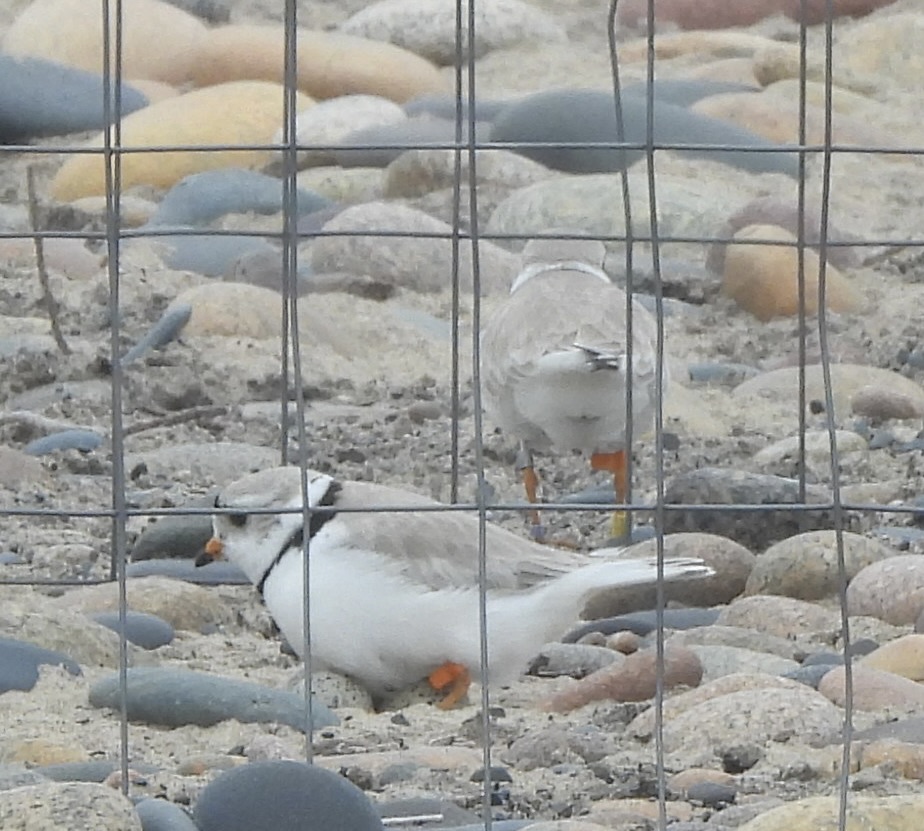
PIPL Little Bill Bob and Vie switching turns incubating. Photo by Polly Sheppard
In less than two weeks we should have little Piping Plover chicks traversing the beach, hopefully four of them. Until then I wait with patience for their June 22 hatch date.
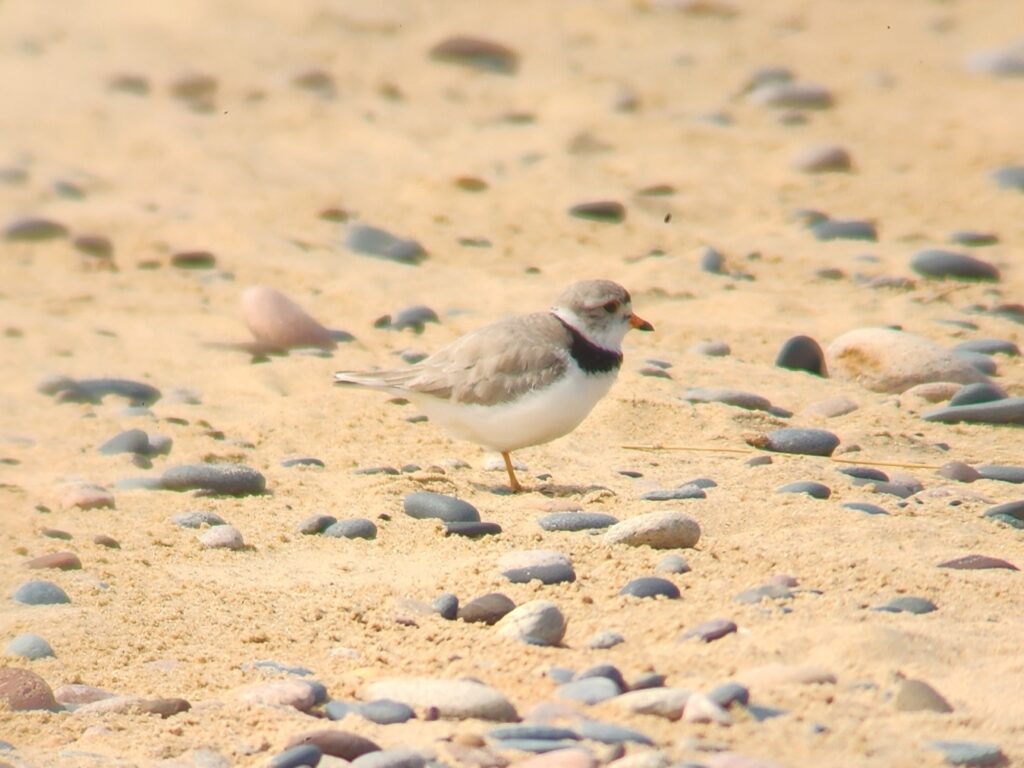
PIPL Hot Shot standing at the shore. Photo by Stephanie Owens
Vermilion Point
Sadly the eggs from Nest 1 were found unviable after arriving at the University of Michigan Biological Station Captive Rearing Center.
The oddballs of Nest 2 are doing fine though. They have a three egg clutch, and have begun incubation. Their aversion to my presence seems to have lightened, as they let me take a photo of the nest while I stood at the shore. I will continue to monitor the pair, manifesting a successful brood for their June 28 hatch date.
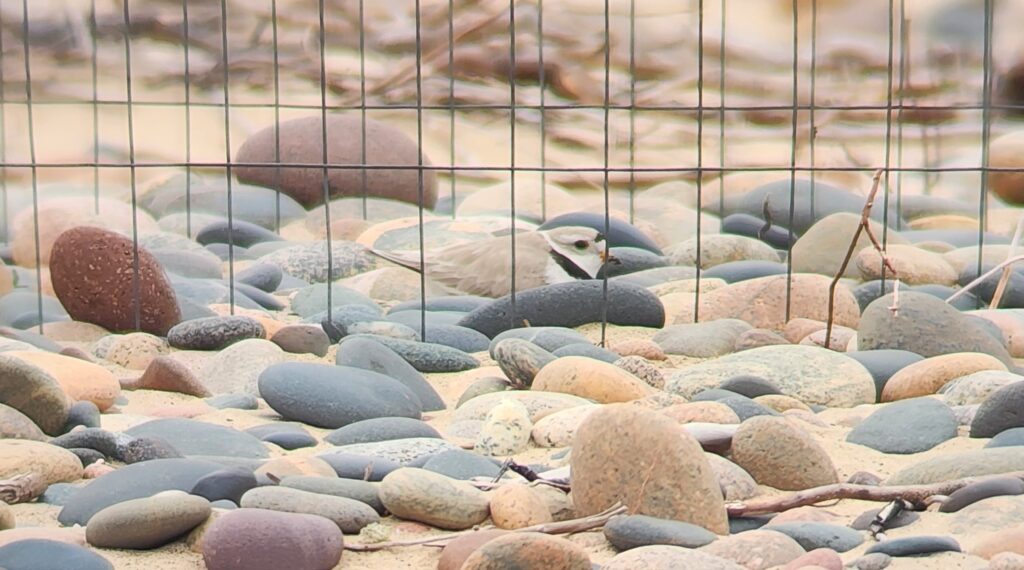
Vermilion PIPL Gladys incubating her nest. Photo by Stephanie Owens
~ Stephanie Owens, 2025 Piping Plover Monitor
Featured Photo: PIPL Little Bill Bob foraging at the shore by Stephanie Owens
Piping Plover monitoring is a collaborative effort between Michigan Audubon and Seney National Wildlife Refuge (USFWS).
You can keep up with the 2025 Piping Plover action at WPBO by reading Stephanie’s blog posts and following WPBO’s social media (Facebook, Instagram, and X).
Stephanie Owens: 2025 Piping Plover Monitor
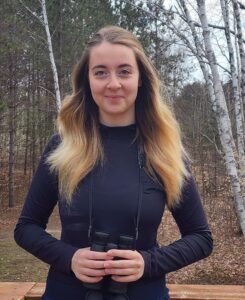 Having grown up in the Upper Peninsula of Michigan, an appreciation of the outdoors seemed inevitable for Stephanie. Walks in the woods with her father and high school science courses helped her identify this passion. In 2024, she earned a Bachelor of Science in Conservation Biology from Lake Superior State University, where she completed her senior thesis on the distribution of per- and polyfluoroalkyl substances in Eastern Upper Peninsula waterways. Now, with three seasons of PIPL monitoring under her belt, she looks forward to another summer with the U.P. plovers and returning to WPBO after a successful ’24 season. After the end of last season, Stephanie began her work at Eva Burrell Animal Shelter as a canine caretaker, fostering hope and love for all animals there.
Having grown up in the Upper Peninsula of Michigan, an appreciation of the outdoors seemed inevitable for Stephanie. Walks in the woods with her father and high school science courses helped her identify this passion. In 2024, she earned a Bachelor of Science in Conservation Biology from Lake Superior State University, where she completed her senior thesis on the distribution of per- and polyfluoroalkyl substances in Eastern Upper Peninsula waterways. Now, with three seasons of PIPL monitoring under her belt, she looks forward to another summer with the U.P. plovers and returning to WPBO after a successful ’24 season. After the end of last season, Stephanie began her work at Eva Burrell Animal Shelter as a canine caretaker, fostering hope and love for all animals there.

